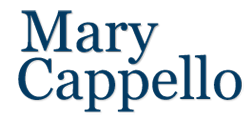English 501 Workshop in Creative Writing:
Literary Nonfiction/Cappello
Experiment/Directive: Discursive Autobiography
There are many ways to go about writing what we are calling in this class a “discursive autobiography.” I offer a few approaches below–the route you take is up to you.
What is a ‘discursive autobiography’?
The main thing that differentiates conventional autobiography from discursive autobiography is that conventional autobiography treats language as a transparent vehicle to the self; it sets out to represent (presumably unmediated) “experience” as reflective of the “self” (singular); and it typically routes (memory, “experience,” perception) through linear narrative. Discursive autobiography treats language, in part, as a self-referring system–it doesn’t only rely on language’s tendency to “mean”; discursive autobiography takes discourse rather than experience as its ground or starting point; OR, discursive autobiography attempts to mine the “discourses” that comprise one’s selves. In discursive autobiography, it might be said that the writer lets language lead.
By this account, conventional autobiography encourages a passive relationship to language and subjectivity whereas discursive autobiography requires an inventive relationship. On a practical level, what this approach demands of a memoirist or biographer is that, instead of turning in the direction of the pre-given subject, she turn in the direction of the rhetorical conventions that comprise that subject in order to expose, exploit, or revise those narratives.In writing a discursive autobiography in the next week, you may learn what you didn’t know about your self and begin to inhabit language more fully. Possibility will open.
Approaches to writing discursive autobiography
Here’s one way to go about it: Rather than begin with a transparent experience that defines “who you are,” consider taking as your starting point the lines to a prayer, a parental commandment, a TV commercial, a children’s song, the rules to a game, an early lesson, a recipe, a conversation, in short, any linguistic template that, though taken for granted at the time, may have had far-reaching consequences for how you narrate who you are to yourself and others, how you situate yourself in the world, and what choices you make. See where the language game that will be the basis of your essay leads you if you free-write on it. Then structure an essay around the issues in the story of your self-construction that it enables you to explore.
Or, try making a list of self-portraying sentences that begin with leading phrases or phrases that we typically associate with self-construction: e.g., “And then I began to…”, “I remember” (see Jo Brainard’s booklength prose poem I Remember), “I believe…” The sentences don’t have to, as they evolve, be “true” to yourself. Rather, they might begin to comment on each other, contradict each other, or end up being about each other. You might want to play with alternating sentences that reflect what you really think you believe with sentences that don’t necessarily reflect your beliefs but that are suggested by the lead words: “I believe.”
Or, identify two or three discourses by which the “self” is narrated: e.g., a personal ad, a birth certificate, a doctor’s report, a census report, a legal document, a diary entry that you wrote as a child, and try to make a self-portrait out of these discourses in the form of a reappropriation. [I may share an example in class].
Or, organize a discursive autobiography around two competing discourses that comprise the self.
